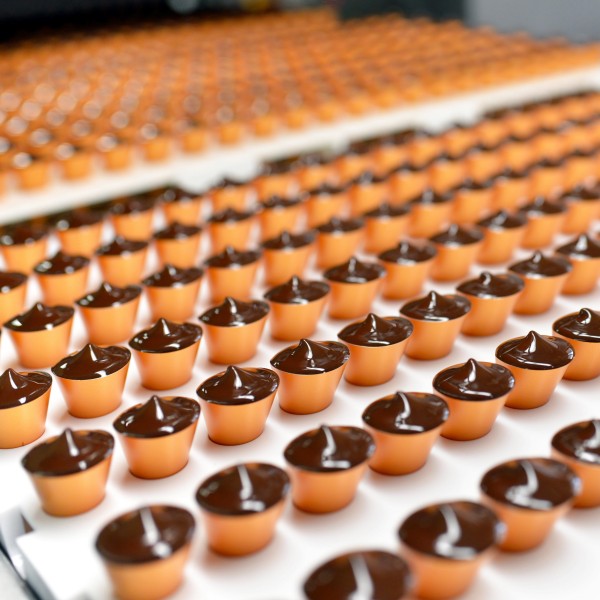Ask the question: "What is the job of the air filters in your food and beverage plant?" and you will typically hear dirt or dust removal in the answer. Some more astute observers might even suggest oil and water aerosol removal.
Although these are correct answers, arguably the most important contaminate when air is directly contacting food product is the removal of airborne microorganisms. These microscopic entities might be entirely harmless, or they may be life threatening if certain conditions are present. By coincidence, an air compressor produces this “certain” environment of moisture, heat, and oil that allows many organisms to thrive. Since it impossible to know at all times what organisms are present inside a compressed air system, it is of utmost importance to implement good manufacturing processes that protect both the processor and customer.
There are a variety of organizations that put forth standards, recommendations, and best-practices to mitigate risk of product spoilage due to microorganism contamination. Following are Donaldson’s recommendations to best protect yourself, your product, and your consumers: filtration, sterilization, monitoring and maintaining.
1. Filtration
Pre-Filtration
Contaminants naturally present in the ambient air are concentrated by the compressor, creating large concentrations of particles and bacteria that are very challenging to filter. On top of this, the mechanical action of the compressor introduces even more particles and oil aerosols that must be removed from the air. As the air cools in the receiver tank, it will usually become 100% saturated with water vapor forming condensation. This condensation is carried downstream in small aerosolized droplets that will overwhelm and damage both refrigerated and desiccant dryers if not removed with an entrainment separator and coalescing pre-filter. Donaldson offers both a Cyclone Separator and a Coalescing filter for pre-filtration.
Drying
After leaving the pre-filters, the air has been treated to remove air/oil aerosols and particles >5 microns in size.
However, the air is still saturated, and any cooling will form condensation.
Over time, the condensate will lead to significant costs including corrosion and freezing. The liquid water and oil interface also provides those certain conditions for supporting bacterial colonization.
It is easier and safer to stop the growth of microorganisms than it is to trap them after the fact. The two most common ways to reduce the water and oil vapor concentration are to either cool the air with a refrigerated dryer, or adsorb the vapor with an adsorption dryer. Donaldson recommends the use of a heatless regenerative desiccant dryer – the Ultrapac™ Smart. This dryer uses a hygroscopic adsorbent material that renews itself through a heatless regeneration process. Significant operational cost savings are realized that refrigerated dryers and heat-regeneration dryers cannot match. Further, the Ultrapac Smart contains both a pre-filter to protect the desiccant from contamination, and an after-filter to protect downstream equipment.
Point-of-Use Filtration
(Donaldson DF series, P-EG series, PG-EG series)
Now that the air is relatively clean and free of aerosolized water/ oil and larger particles, it is ready for final filtration before the air contacts the product itself or a product contact surface. Point-of-use filtration is important since the previous filtration is not designed to remove bacteria at an absolute retention rate. In addition, there could be pipe scale or contaminate between the pre-filters and the point-of-use filter. Kinetic energy is proportional to the square of the velocity, so even small particles can possess enough energy to damage and disarm a sterile air filter at high air velocities. Donaldson recommends using an M- or S- grade coalescing filter and an activated carbon filter. The activated carbon filter will adsorb several compounds (e.g. hydrocarbon vapor, perfume, citrus, sulphuric acid, toluene, and methanol) that could affect the smell or flavor of the final product.
Lastly is the sterile air filter itself. Donaldson’s Sterile Air filter is engineered specifically to remove over 99.99998% of bacteria sized contaminant.
An accepted industry standard ASTM F838 uses Pseudomonas Diminuta (ATCC 19146) as the challenge organism having a 0.3 microns average diameter. A sterile grade filter will produce a sterile filtrate when challenged with 1.0x107 bacteria per cm².
This is important in part because filter manufacturers sometimes rate their sterile filters at 0.01 microns. The science of filtration shows that it is actually easier for most filters to capture 0.01 microns than 0.2 microns, which is why Donaldson rates its sterile elements at 0.2 microns. Donaldson's complete range of sterile air elements offer filtration efficiencies that are greater than or equal to 99.99998% at 0.2 micron.
2. Sterilization
(Donaldson P-GS and P-GSL N steam filters)
So far, two methods of controlling microorganisms in processed food and beverages have been explained. Drying removes the water that is necessary for life. Filtering removes the oil bacteria feed on and the bacteria themselves. As long as the bacteria stay in the filter, and as long as the air supply at the point-of-use is dry, the bacteria are inactive spores. However, under certain conditions, bacteria can re-activate. In such a case, the bacteria can grow through the filter media and reach a downstream product or process.
One way to protect against the risk of bacteria grow through is to steam sterilize or autoclave the sterile air filters. The heat from these processes creates irreversible, intracellular reactions that permanently disable microorganisms. Since steam is commonly available in installations to sterilize lines and tanks, it is convenient to use this steam for the sterilization of filters and housings. Saturated steam is ideal for filter sterilization because it gives up its heat at a constant temperature, and this heat is used to denature the intracellular proteins of microorganisms and render them inactive. It is just as important to filter the steam itself. Donaldson offers two different types of steam filters to produce culinary steam - the sintered stainless steel P-GS filter and the pleated stainless steel P-GSL N filter.
3. Monitoring
The sterile air element will not create a differential pressure to notify when a filter change out is necessary. It is important to periodically take and log measurements to detect the presence of microbial contamination. One method is to conduct integrity tests of the sterile air elements.
The type of sterile air filter used will determine the type of test used to check the filter integrity. For depth filter elements (e.g. P-SRF and P-SRF V), filters can be integrity tested using an aerosolized oil dispersion test. For membrane filters (e.g. PT N and P-SRF X), integrity is checked using either bubble-point of diffusive flow tests. These test methods should be used for all point-of-use filters to verify that the air in direct or indirect contact with food is clean and safe.
4. Maintaining
Over many hours of use, filters become plugged with contaminate. The media undergoes tremendous stresses and at some point the filter integrity may be compromised. Choosing the proper arrangement of sequential series filters will greatly reduce the blocking tendency, better protect sterile filter integrity, and lead to significant savings through lowered maintenance costs over time.
Donaldson has documented recommended filter change out intervals that will help ensure your process is protected if preventative maintenance schedules are adhered to. The protection of your process, your customer, and your company’s reputation just might depend upon it.

Keeping Air Sterile in Air Compressor Environments
The removal of airborne microorganisms in air compressor environments is essential to successful food and beverage production. Sterile air is a key requirement and utilising correct filtration methods plays an important role in achieving this level of air quality.



